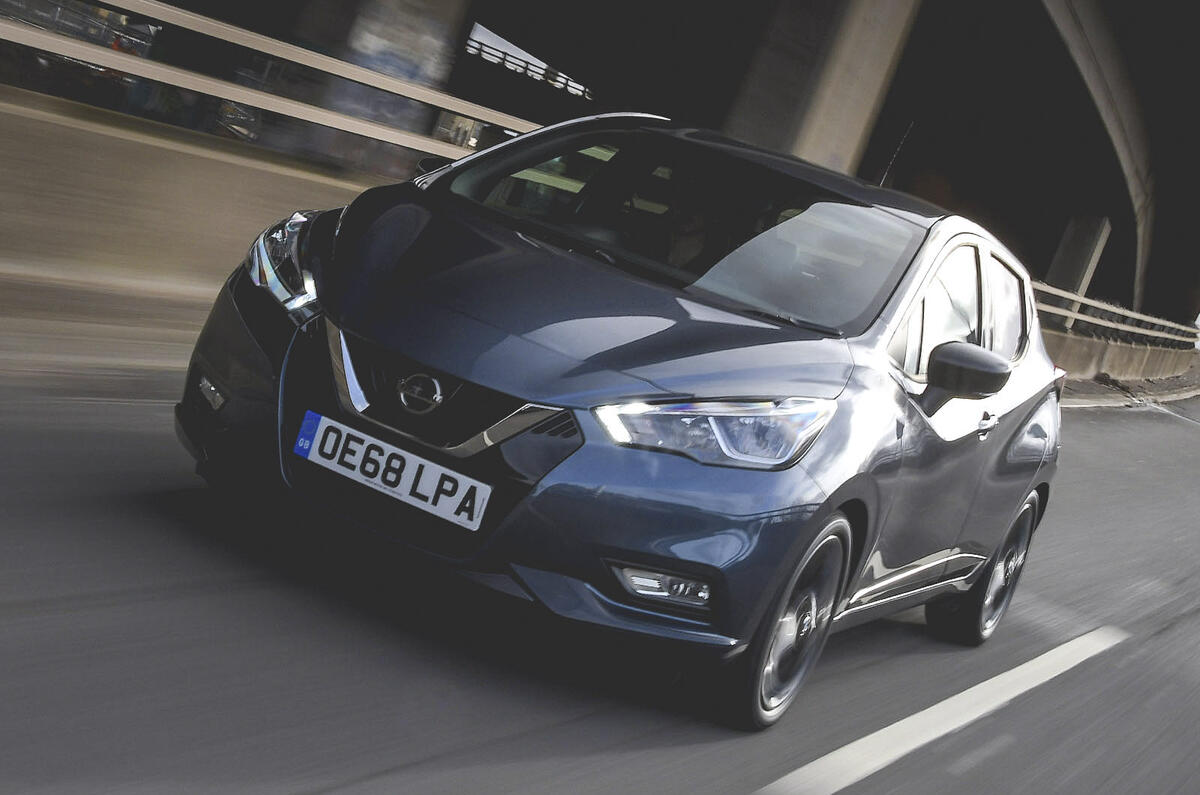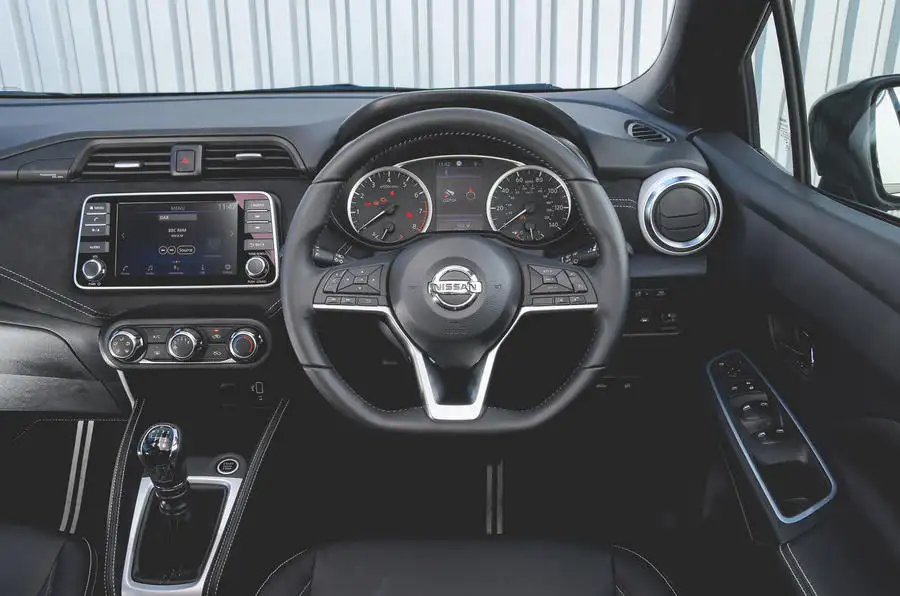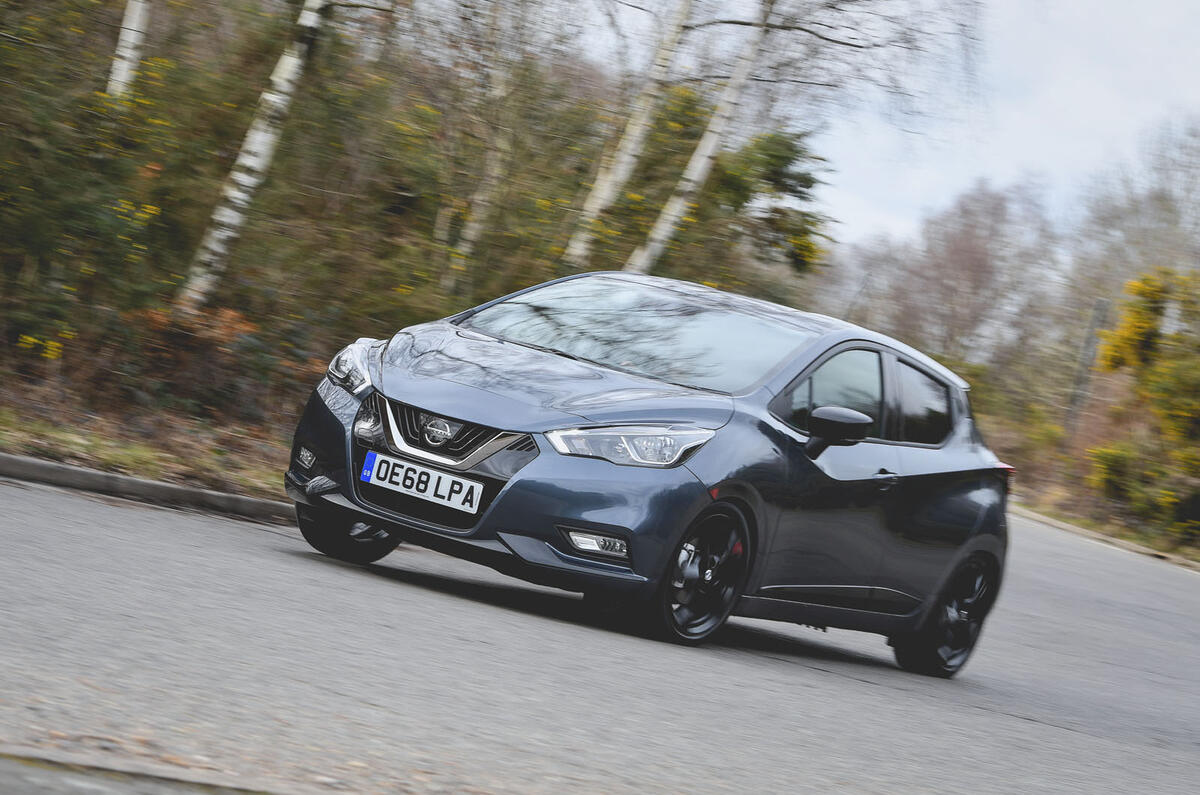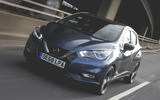There’s an athletic flair that permeates the N-Sport Micra’s cabin – one that is well judged in relation to its status as a moderately sporting performance derivative. The seats are trimmed primarily in dark Alcantara, which is complemented by contrasting dual white stripes.
The dashboard facing is finished in the same material, complete with further contrasting white stitching. Meanwhile, the soft-touch synthetic material covering the top of the dash is inoffensive to prodding fingers, and the white surrounds of the outer air vents are juxtaposed smartly against the cabin’s darker palette.
Of course, the N-Sport isn’t free from the sorts of tougher, more industrial plastics common to members of the supermini genre, but their use is subtle enough to prevent the Nissan from being singled out among its peers. It’s just a shame that the range of colourful interior personalisation packs available throughout the wider Micra range can’t be optioned at the N-Sport grade – orange seat bolsters would inject the place with a touch more character.
Elsewhere, the Micra continues to exhibit an impressively low hip point, while generous reach in the telescopic steering column mitigates the need for taller drivers to hunch themselves over the well-spaced pedals. That same ergonomic sensibility is also present in the location of controls for the HVAC and infotainment systems.














































